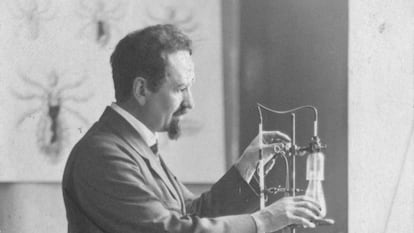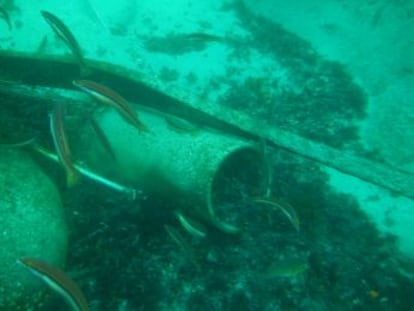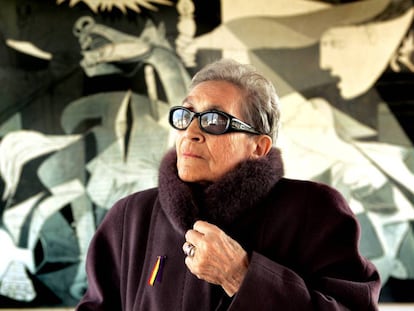Rudolf Weigl: the Schindler of science who saved thousands from the Nazis
The Polish scientist used his typhus vaccine to spare Jews, intellectuals and members of the resistance from the Gestapo while clandestinely distributing doses to opponents of the Third Reich

Among the heroes who dedicated themselves to protecting and saving the lives of thousands of people during the Nazi occupation of Europe was the Polish scientist Rudolf Weigl, whose specialist fields were microbiology and parasitology. He knew how to make the most of his knowledge and the respect that the Nazis held for his work to employ Jews and intellectuals who faced persecution by the Gestapo. The nature of Weigl’s research also spared many people from arrest and the concentration camps because the machinery of the Third Reich had little desire to come into contact with those they viewed as pariahs for participating in experiments to find a vaccine for typhus.
Critical but tolerant, Weigl was blessed with an exceptional imagination and a singular talent for experimentation. Visiting scientists from around the world were often enchanted by his brilliant concepts. However, in spite of his clairvoyant research abilities he was not considered a typical scientist as some of his assistants thought he was a bad teacher. And Weigl for his part never sought to pass on his knowledge to others, even though much could be learned from him. He neither trained his subordinates nor supervised their research; those who achieved success did so on their own initiative.
Weigl’s greatest achievement was developing the first effective vaccine against epidemic typhus, a disease that claimed many lives at the turn of the last century. It was though a lengthy process due to Weigl’s extreme caution: as a non-medical doctor, he preferred to carry out thorough lab-based studies before moving onto the immunization of human subjects.
For many years Weigl was falsely accused of collaborating with the Nazis by some of his colleagues
The Polish scientist belonged to that category of researchers who preferred to work in the laboratory over publishing their studies and discoveries. The vast majority of his work remained unpublished or was only passed on by word of mouth, including the entirety of his experimental investigation of arthropods. According to those who knew him, Weigl’s method of documentation was so chaotic that his notes were unintelligible.
His work earned him multiple Nobel nominations and from the study of a tiny louse to the saving of an estimated 5,000 lives during the Nazi persecution, his achievements and legacy endure today far beyond the development of a typhus vaccine.
Rudolf Stefan Weigl was born on September 2, 1883, in the city of Prerau, in what was then the Austro-Hungarian Empire. His father died when he was young and his mother remarried a Polish high school teacher. Weigl was subsequently raised in Poland and embraced its language, culture and customs.
In 1907 he graduated from the biology department of Lviv University and became an assistant to the eminent scientist J. Nusbaum-Hilarowicz. In 1913, Weigl completed his doctorate in zoology, comparative anatomy and histology. His early work on cellular structure and transplants earned him great prestige among his peers.
His mastery of histological technique and his interest in cytology influenced Weigl’s entire scientific career and inspired his research. When World War I broke out in 1914, he was drafted into the Austro-Hungarian army’s medical corps as a parasitologist and at a time when millions of people in Eastern Europe were afflicted by typhus, he began his lifelong work to stop its spread and develop a vaccine.
The role of the employees was to sit for an hour with a belt containing small cages of lice strapped to their thigh so that the insects could feed
During the conflict Weigl developed the first effective vaccine in the world against spotted fever and he continued his research on typhus and developed a vaccine at the Institute of General Biology at Lviv University, which was later renamed the Weigl Institute in his honor. He remained at the head of his department at the institute during the Soviet occupation of Lviv and the subsequent Nazi invasion. Despite his refusal to sign up to Nazi ideology he retained his position throughout World War II because the vaccine produced at the institute was the most effective one available and served the purposes of the German army.
As a result, Weigl came to the conclusion that being employed by the institute provided the best chance of survival for those who were in danger from the security forces of the Third Reich. Carrying identification as any kind of employee was an effective safety measure against the Gestapo’s arbitrary arrests as its agents avoided contact with anyone who could potentially infect them with typhus. Weigl began selectively to employ those people who may have been on the Gestapo’s lists, above all members of the resistance, intellectuals and Jews, using them as blood donors, or “louse-feeders,” for his experiments.
During the development of the vaccine, Weigl invented a system that allowed him to cultivate the Rickettsia prowazeki bacterium, which is responsible for typhus, in the intestines of lice, an avant-garde method at the time given that such experiments were only carried out on animals such as guinea pigs and rabbits. The method consisted of injecting the bacteria into the anus of the lice using a needle smaller than a capillary. As these parasites reproduced swiftly and easily, Weigl created a lice farm. In a small enclosure, the researcher fed the insects on human blood, including his own, with the aim of testing his vaccine through the development of the bacteria in the insects.
With the Nazis sending Jews to the concentration camps, Weigl ensured that thousands of his donors were Jews. Their function was to sit for an hour with a belt containing small cages of lice strapped to their thigh so that the insects could feed. There was no danger of direct contagion as the cages were designed so that the lice were able to squeeze their heads through without escaping. The bacteria were spread through the feces of the lice, which could be dispersed by scratching the bite marks.
Today it is estimated that Weigl saved some 5,000 people among Lviv’s academic circles, as well as Jews and members of the resistance. Once the vaccine had been produced at the institute, it was distributed via the underground network to civilians, partisans, the ghettos of Lviv and Warsaw and to the concentration camps and even Gestapo prisons.
After the war, Weigl moved to Krakow to continue his research at the Jagiellonian University, where he was named chair of the Microbiology Institute and he later served as chair of Biology at the University of Poznan until his retirement in 1951. Despite several Nobel nominations during his career, Weigl was never honored for either his scientific work or his wartime activities, with both German and Soviet opposition against his receiving the award. For many years Weigl was falsely accused of collaborating with the Nazis by some of his colleagues.
Rudolf Weigl died in the Polish mountain town of Zakopane on August 11, 1957, at the age of 73. Half a century after death the scientist’s work and humanitarian activities have been acknowledged by many and in 2003, he was named Righteous Among the Nations. This honor was bestowed by Israel in recognition of his work to save the lives of thousands of Jews during the Second World War.
English version by Rob Train.
Tu suscripción se está usando en otro dispositivo
¿Quieres añadir otro usuario a tu suscripción?
Si continúas leyendo en este dispositivo, no se podrá leer en el otro.
FlechaTu suscripción se está usando en otro dispositivo y solo puedes acceder a EL PAÍS desde un dispositivo a la vez.
Si quieres compartir tu cuenta, cambia tu suscripción a la modalidad Premium, así podrás añadir otro usuario. Cada uno accederá con su propia cuenta de email, lo que os permitirá personalizar vuestra experiencia en EL PAÍS.
¿Tienes una suscripción de empresa? Accede aquí para contratar más cuentas.
En el caso de no saber quién está usando tu cuenta, te recomendamos cambiar tu contraseña aquí.
Si decides continuar compartiendo tu cuenta, este mensaje se mostrará en tu dispositivo y en el de la otra persona que está usando tu cuenta de forma indefinida, afectando a tu experiencia de lectura. Puedes consultar aquí los términos y condiciones de la suscripción digital.
More information
Archived In
Últimas noticias
Most viewed
- Reinhard Genzel, Nobel laureate in physics: ‘One-minute videos will never give you the truth’
- Oona Chaplin: ‘I told James Cameron that I was living in a treehouse and starting a permaculture project with a friend’
- Pablo Escobar’s hippos: A serious environmental problem, 40 years on
- Why we lost the habit of sleeping in two segments and how that changed our sense of time
- Chevy Chase, the beloved comedian who was a monster off camera: ‘Not everyone hated him, just the people who’ve worked with him’










































